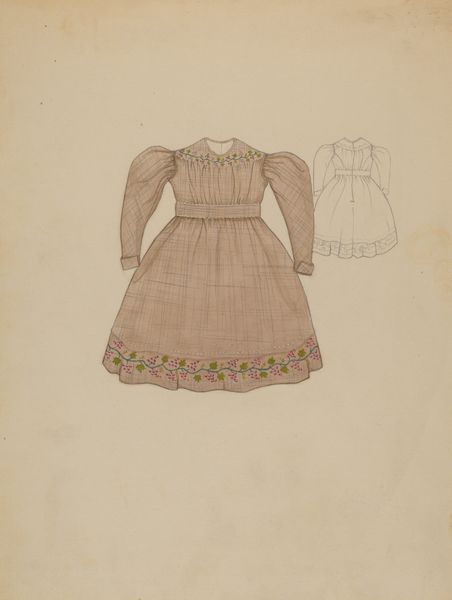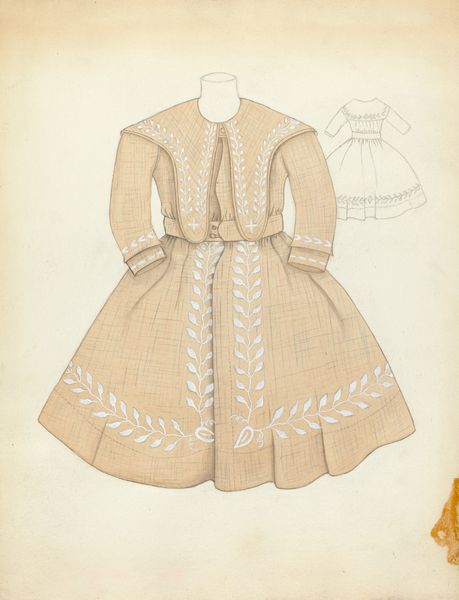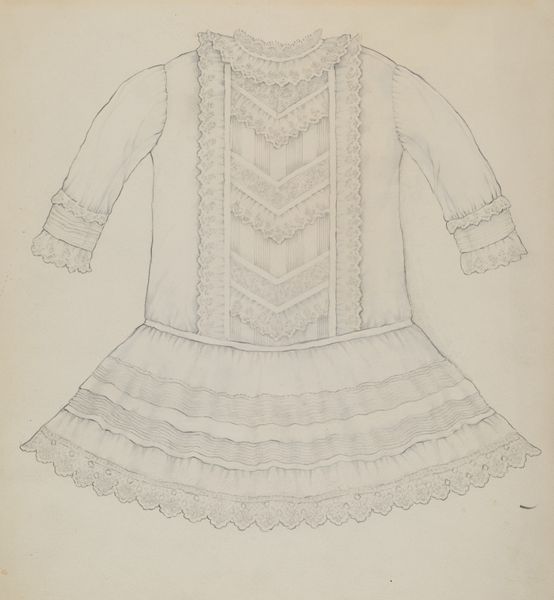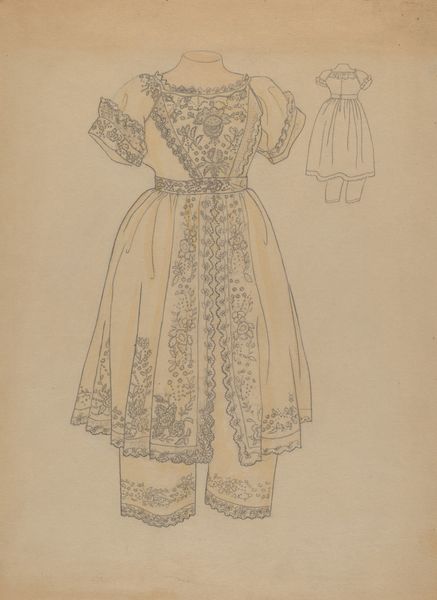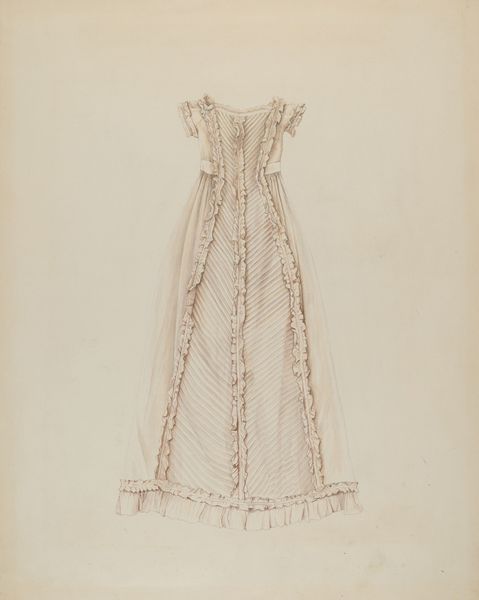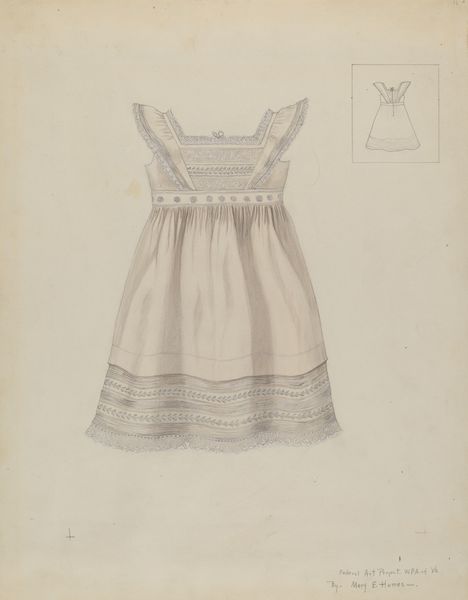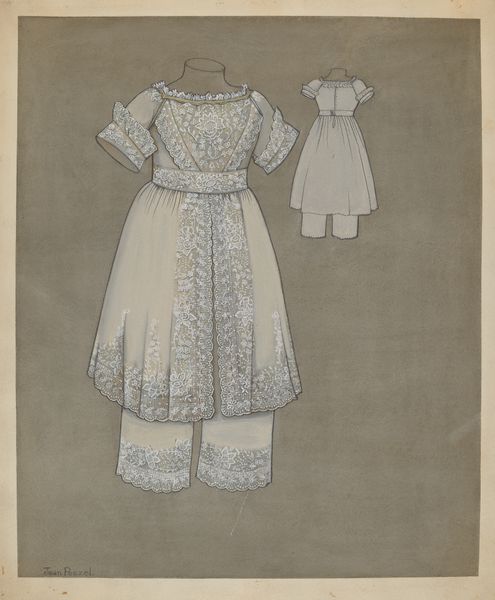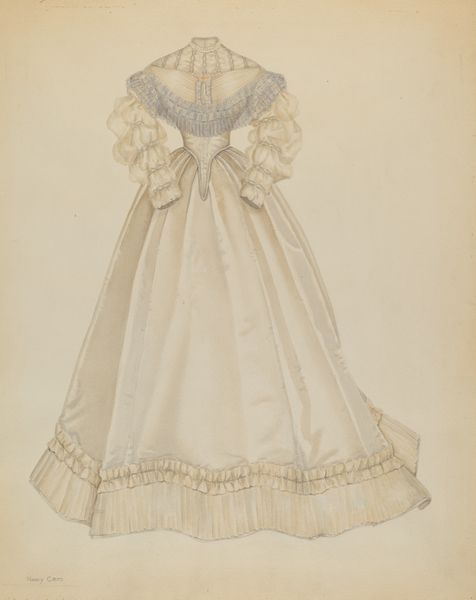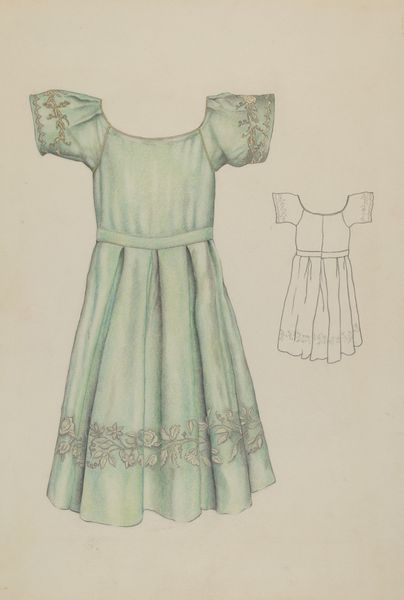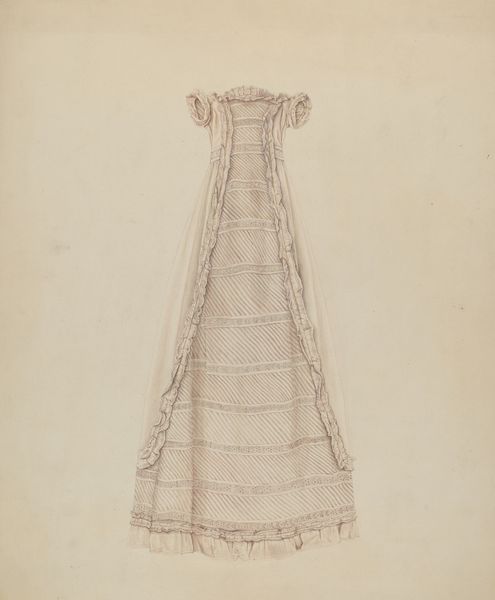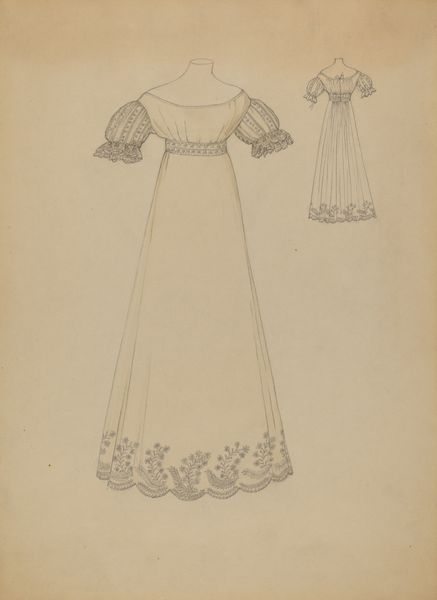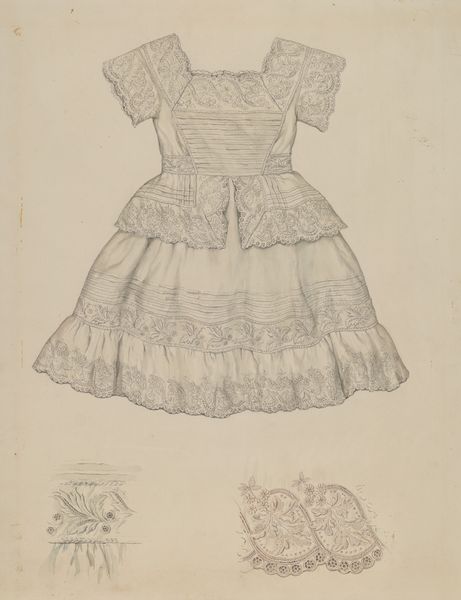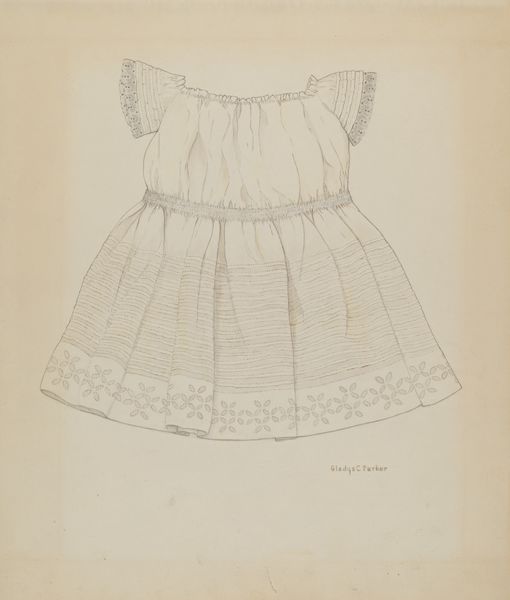
drawing, pencil
#
pencil drawn
#
drawing
#
light pencil work
#
pencil sketch
#
sketch book
#
figuration
#
personal sketchbook
#
idea generation sketch
#
pencil
#
sketchbook drawing
#
pencil work
#
academic-art
#
fashion sketch
#
sketchbook art
Dimensions: overall: 35 x 30.5 cm (13 3/4 x 12 in.)
Copyright: National Gallery of Art: CC0 1.0
Curator: This lovely sketch is called "Child's Dress," dating from around 1937, rendered in pencil by Ray Price. It's quite delicate, isn't it? Editor: Yes, there's something both wistful and very precise about it. Almost like a ghost of childhood… all frills and formality, trapped in pencil lines. I wonder what occasion this dress was for. Curator: Considering the era, one can almost certainly associate the garment with a whole system of beliefs. In the 1930s, clothing for children – and especially girls – held strong symbolic weight tied to innocence, virtue, and the perpetuation of tradition. Did it have any other meaning to the wearer or viewer? Editor: Absolutely. This dress almost looks like something from a fairytale! The ruffled sleeves and the elaborate embroidery details suggest a costume, or something meant for an elaborate performance, for being “seen,” maybe during that time in history? Curator: Precisely. The ornamentation you mention evokes something beyond mere utility. The circular and floral designs embroidered at the hem and around the collar resonate with familiar emblems of fertility and natural harmony – ideals deeply woven into the social fabric then. Editor: Right. What’s interesting too is the presence of a second, smaller dress sketched beside it. Like a rough draft or a second thought, the dress stands next to itself as a different form. Did she want the smaller sketch as a study? Curator: Exactly! These additional design sketches provide glimpses into an artist's process, an early moment of their consideration, showing how ideas morph on paper. And with fashion design, one can observe so many influences beyond individual whimsy, from trends to traditional forms, all shaped by social expectations. Editor: A frozen, material representation. A silent voice. Still, despite the social trappings, the drawing feels very intimate. This soft, meticulous pencil work holds such grace. There’s also an ambiguity of an empty dress. Curator: Exactly. We have a concrete visual marker for considering ideas of cultural conditioning or perhaps even the complex dialogue between personhood and clothing over time, to be seen and studied again by today's audiences. Editor: This small, thoughtful image resonates beyond its surface. In its deliberate absence and its intricate depiction, there is, for me, a quiet provocation that is surprisingly human and vulnerable. A single point to remind the modern viewer how dress has developed over decades. Curator: Absolutely! Its subtle precision allows these simple lines to evoke powerful, resonating concepts for anyone open to interpreting beyond the first glance.
Comments
No comments
Be the first to comment and join the conversation on the ultimate creative platform.
